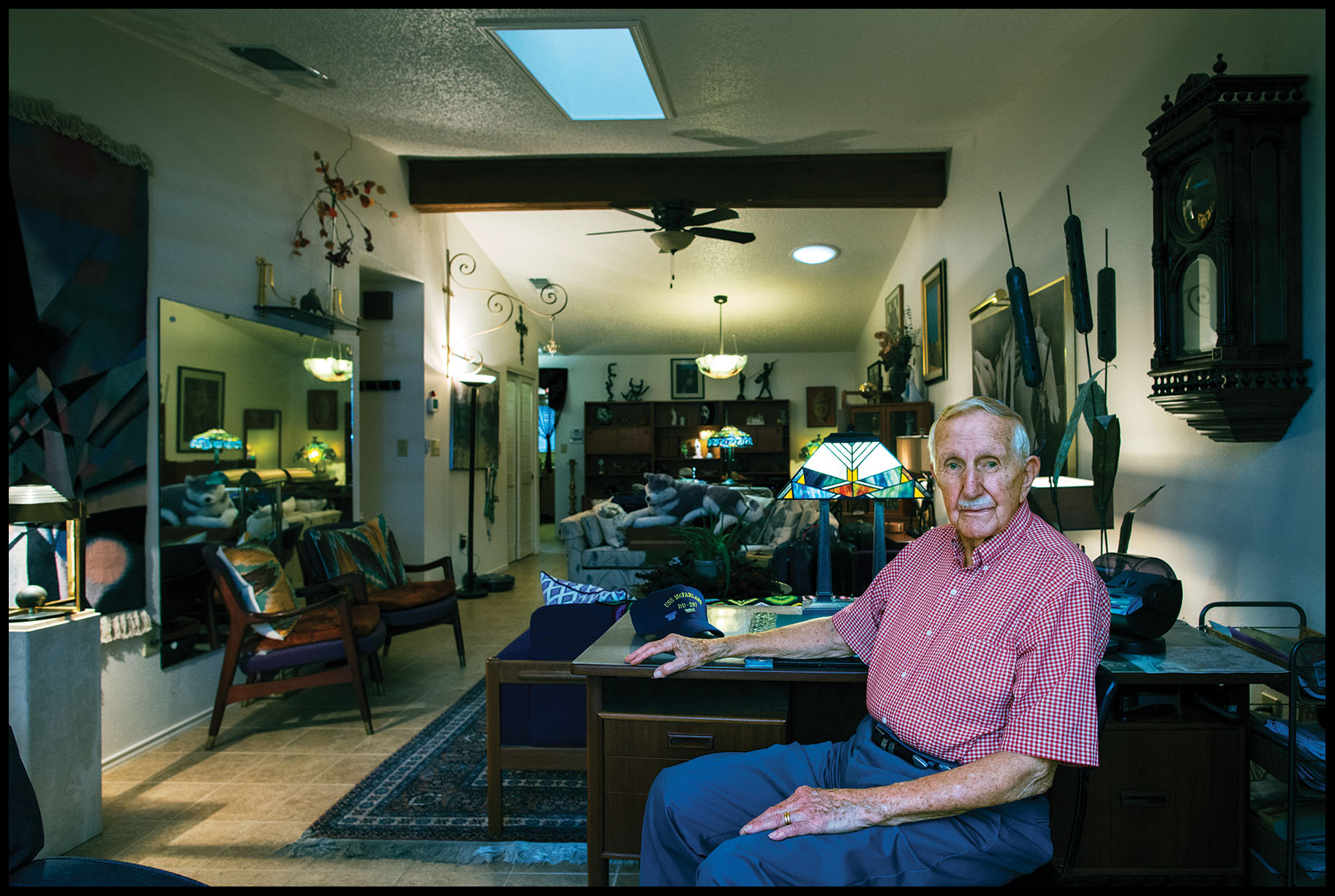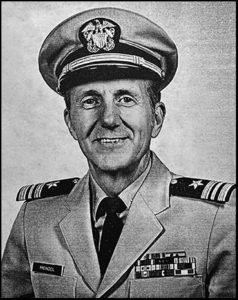
Daniel Mendel, Jr.
Served on USS McFarland
and USS Heermann
Daniel Mendel, Jr.
Lieutenant Commander, U.S. Navy
1941-1972

LCDR Daniel Mendel,
Pensacola, FL, 1970
The Battle off Samar: I have a picture that’s an honest rendition of shells falling around us for almost three hours. People say I embellished it. The hell I did. I saw it and I felt it. I’m grateful I survived.
I was born May 26, 1922 in New Orleans. I always thought about the Navy. My dad and uncles were not happy with me because they were Marines. My mother’s side was Navy. I entered the Navy on December 15, 1941 and served for 30 consecutive years.
I worked with my dad until I was 15. He was a butcher. I told him I wanted to get a different job so I could go to high school. I got a job at an ice cream parlor and worked there until I entered the Navy.
I went to boot camp in San Diego. Then I was selected to go to signal school and became a signalman on the USS McFarland. My first combat was sinking submarines. Later we went into Japanese occupied territory to collect intelligence. At Guadalcanal, we were delivering aviation gasoline in 55-gallon drums to the Marines who were really in a bad spot. Nine dive bombers almost sank us. We were hit on the 16th of August, 1942. By early January, we were back in Pearl Harbor.
I went to the USS Heermann and we picked up the war at Tarawa. We bombarded the beach for hours before the Marines went in. After Tarawa we went to Kwajalein, Eniwetok, Peleliu and Leyte. My last combat was that big surface battle off of Samar Island where little destroyers like us were forced to fight Japanese battleships.
The worst thing that happened to me during the war was at Tarawa. We were close to the beach when we were firing. I had a long glass and could see everything that was happening. When our Marines went in, I saw the Japanese come out of holes in the ground and slaughter our guys. It was absolutely sickening.
Off of Leyte on October 25, 1944 we had six small aircraft carriers to support our Marines with strafing and bombing when they were landing. We had four destroyer escorts and three Fletcher-class destroyers that made up Taffy 3, our radio call sign. That’s when the Japanese fleet caught us and we had to fight the battleships. Although we took a big hit that almost blew the bow off, we survived. The Hoel sank. I have a picture that’s an honest rendition of shells falling around us for almost three hours. People say I embellished it. The hell I did. I saw it and I felt it. I’m grateful I survived.
I served on the USS Columbus, the Missouri and the Franklin Roosevelt. Then they sent me to Oslo, Norway as a cryptologist. I encrypted and decrypted classified traffic for the three attachés of the Navy, Air and Army from 1953-56. It was probably the best tour of my Naval career.
In 1956 I took the exam for warrant and passed. I was given orders to go to Adak, Alaska to the Naval Security group there. It’s almost the last island in the Aleutian chain. For the next 13 ½ years I was in specialized communications at Adak, then Guam. I went back to the States to the Navy Receiving Station in Washington, D.C., then to the National Security Agency for three years. That place scared me the most. I knew what was going on throughout the world and within the Navy.
I retired as a lieutenant commander on February 1, 1972. We came back to San Antonio and my wife and I earned bachelor’s degrees and became certified as teachers. I taught at Churchill for a little over ten years. The one thing I can’t say enough is that I have a wonderful wife. Charlotte and I were married for 74 years. I have no regrets because the Navy was good to me. Of course I worked hard while I was there. {02-10-2018 • San Antonio, TX}